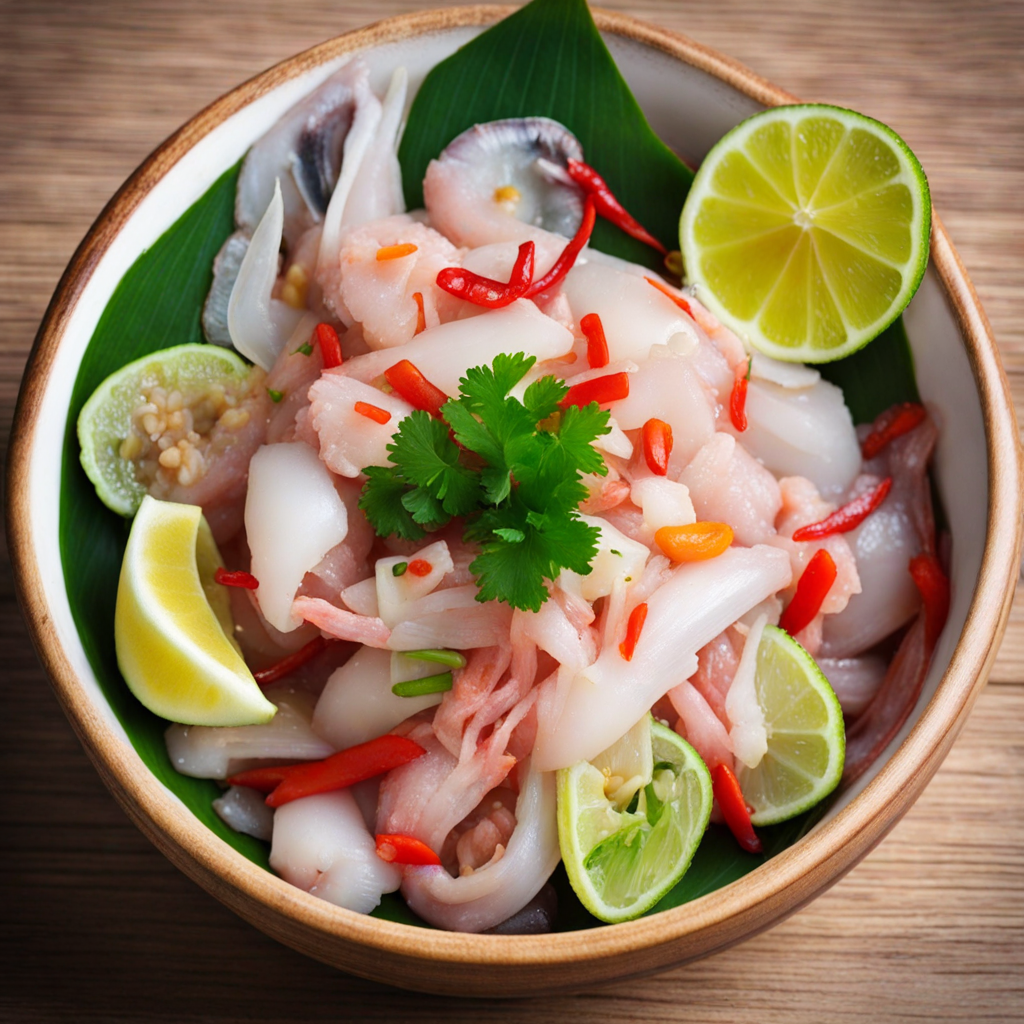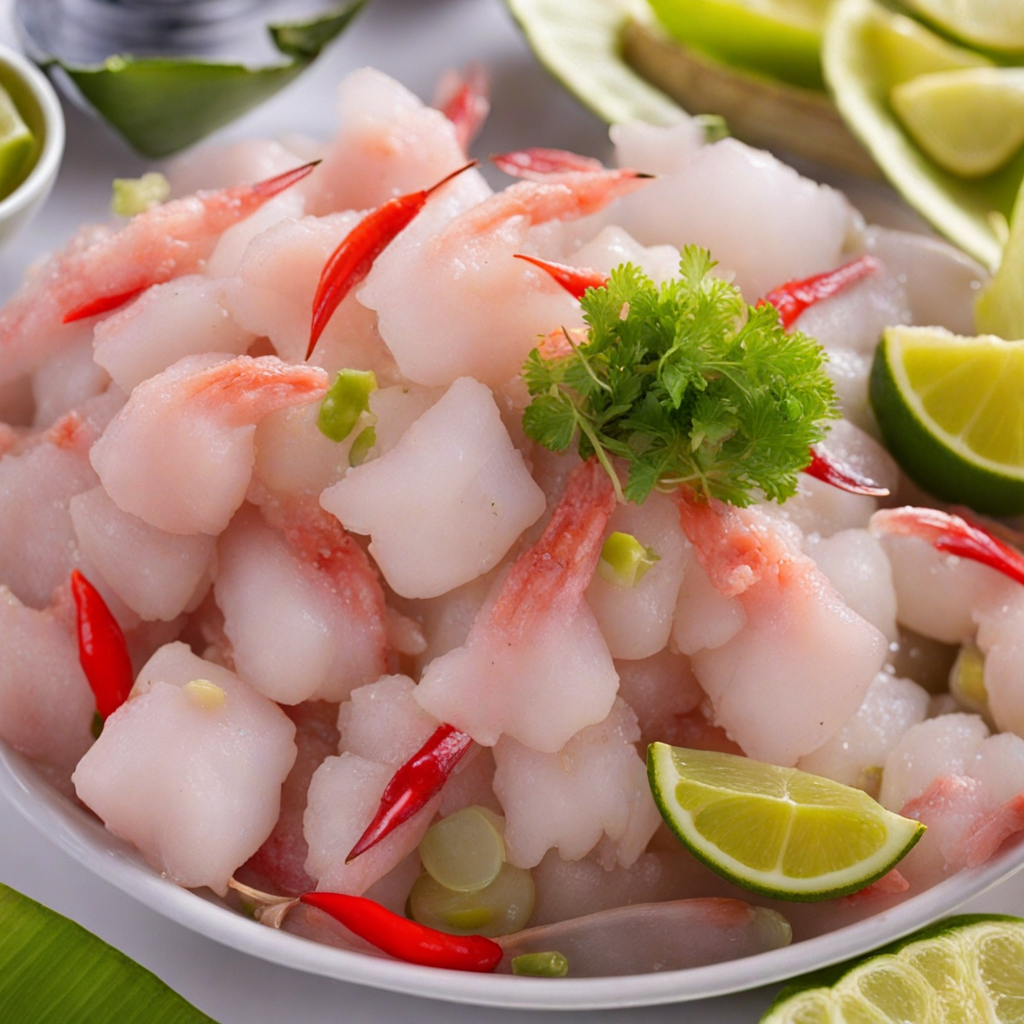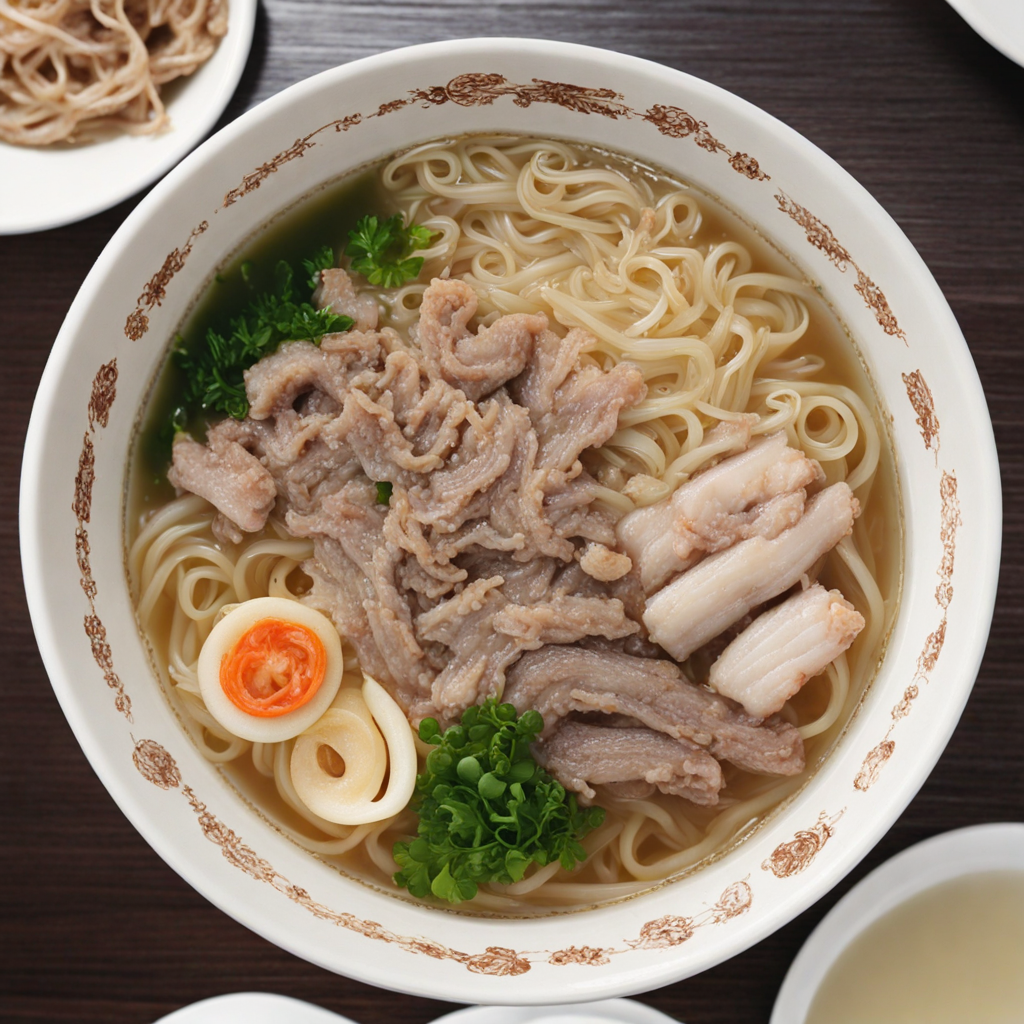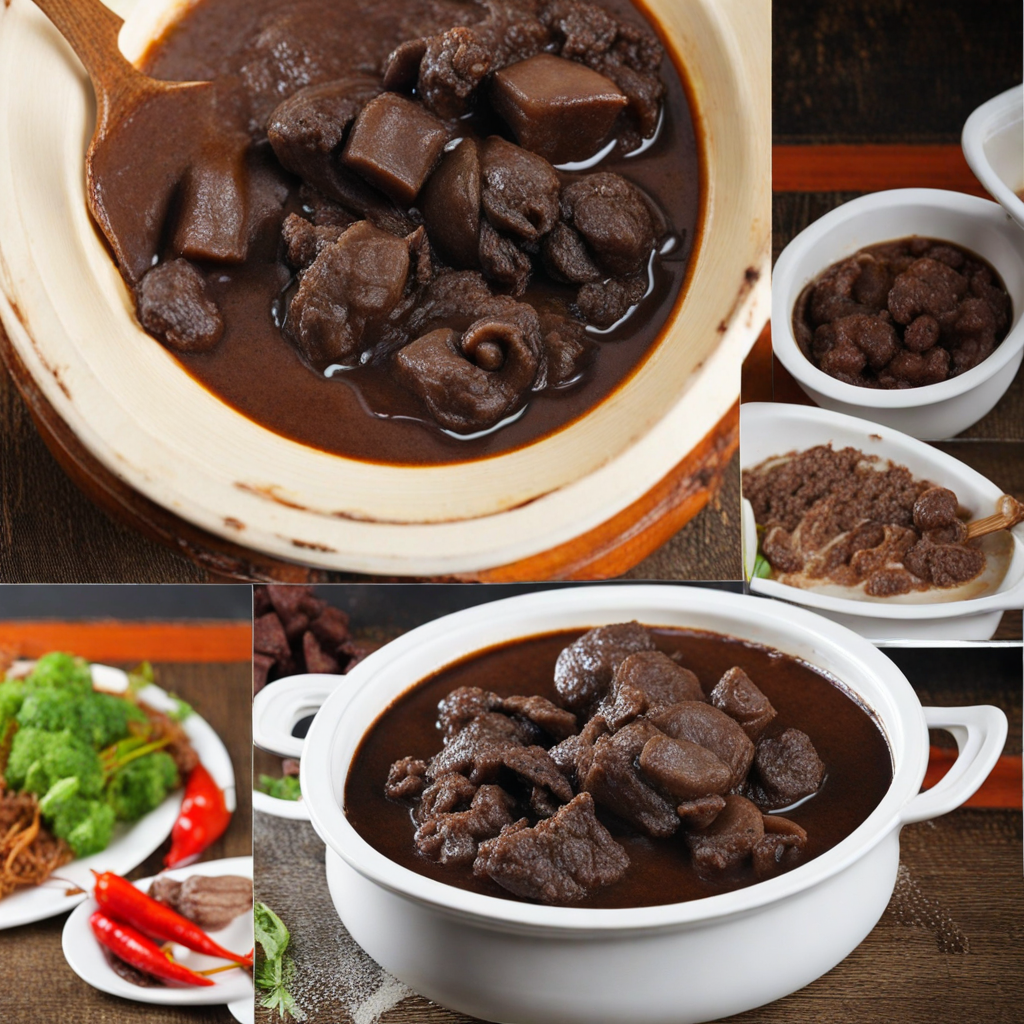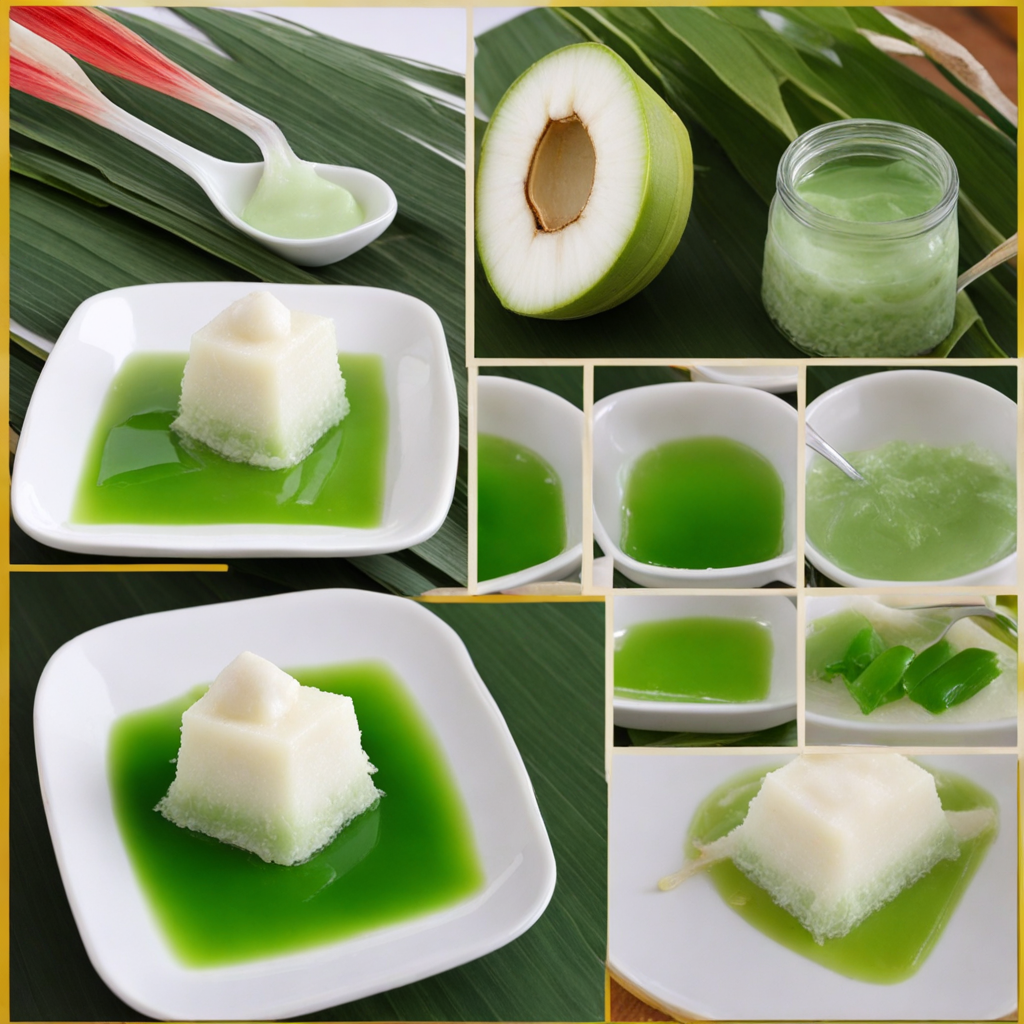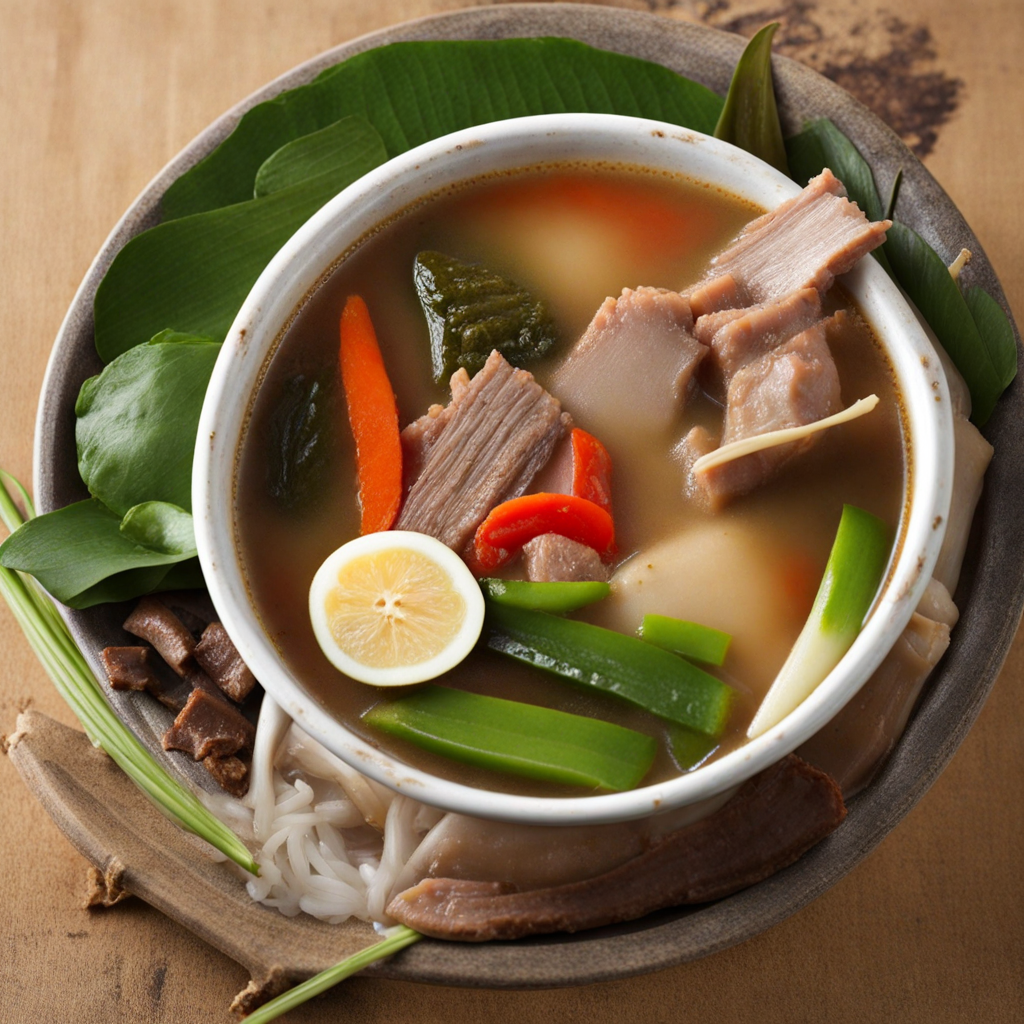Kinilaw
Kinilaw is a traditional Filipino dish that showcases the vibrant and fresh flavors of the sea. Often likened to ceviche, it primarily consists of raw fish, usually tuna or mackerel, which is marinated in a mixture of vinegar, citrus juices, and spices. The acidity from the vinegar and citrus not only "cooks" the fish but also enhances its natural flavors, creating a refreshing and zesty profile that dances on the palate. The dish is typically garnished with ingredients like chopped onions, ginger, and chili peppers, adding layers of texture and heat to each bite. What sets kinilaw apart is its versatility; chefs and home cooks alike often incorporate various local ingredients, such as coconut milk or fresh herbs, to elevate the dish further. The inclusion of these components can introduce a creamy richness or a fragrant aroma, making each version unique. Kinilaw is often served as an appetizer or side dish, perfectly complementing grilled meats or served alongside steamed rice, making it a staple in Filipino gatherings and festivities. The experience of enjoying kinilaw goes beyond just taste; it’s a celebration of the Philippines' rich culinary heritage. The dish embodies the culture’s resourcefulness, utilizing the freshest catch available and transforming it into a work of art. Each bite offers a burst of oceanic freshness, balanced by the tanginess of the marinade, and is often accompanied by a cold local beer or a refreshing coconut drink, making it an ideal choice for warm sunny days or lively beach picnics.
How It Became This Dish
Kinilaw: A Culinary Jewel of the Philippines #### Origins Kinilaw, a traditional Filipino dish, is a raw fish salad that showcases the archipelago's rich marine resources and its long-standing relationship with culinary innovation. The origins of kinilaw can be traced back to the indigenous communities of the Philippines, where fishing was not merely a means of sustenance but also an integral part of cultural identity. The practice of eating raw fish is believed to predate colonial influence, with early Filipinos utilizing the abundant marine life surrounding the islands. The term "kinilaw" derives from the root word "kilaw," which means "to eat raw." This dish exemplifies the Filipino's resourcefulness in the kitchen, where the fresh catch of the day is transformed into a vibrant, flavorful dish with minimal cooking. Prior to the introduction of vinegar, kinilaw was likely prepared using sea salt and the natural acidity of certain fruits, such as calamansi or green mango, to preserve and enhance the fish. #### Ingredients and Preparation Kinilaw showcases the diverse marine bounty of the Philippines, utilizing various types of fish, such as tuna, mackerel, or marlin, alongside a medley of fresh ingredients like onions, ginger, and chili peppers. The fish is typically cubed and marinated in vinegar or citrus juice, which 'cooks' the fish through acidic reaction. This method not only preserves the freshness of the fish but also imparts a tangy flavor profile that is quintessential to kinilaw. Traditionally, kinilaw is served as an appetizer or side dish, often accompanied by steamed rice or enjoyed with a cold beer, making it a popular choice during gatherings or special occasions. The communal nature of enjoying kinilaw reflects the Filipino culture of hospitality and togetherness. #### Cultural Significance Kinilaw holds a special place in Filipino culture, transcending mere culinary practice to embody the values and traditions of the people. The dish is often associated with celebrations, family gatherings, and social events, reflecting the communal spirit of Filipino society. It is a dish that brings people together, promoting a sense of sharing and camaraderie. In coastal communities, kinilaw is not just a dish; it is a representation of livelihood and heritage. Fishermen take pride in their catch, and the preparation of kinilaw is often a communal affair, with families gathering to create the dish and share stories. The act of preparing kinilaw can be seen as a ritual, connecting generations and preserving traditional methods of cooking. Moreover, kinilaw embodies the Filipino concept of "bayanihan," or communal unity. The preparation and consumption of kinilaw often involve local ingredients, reflecting the region's agricultural and maritime resources. This emphasizes the connection between food, culture, and environment, reinforcing the importance of sustainability and local practices. #### Evolution Over Time Over the years, kinilaw has evolved while maintaining its traditional roots. The arrival of Spanish colonizers in the 16th century introduced new ingredients and cooking techniques, influencing local cuisine. The use of vinegar in kinilaw, for instance, was likely enhanced through Spanish culinary practices, as vinegar was a staple in their cooking. As globalization and modern culinary trends emerged, kinilaw began to adapt further. Chefs and home cooks alike started experimenting with non-traditional ingredients, introducing elements like tropical fruits, herbs, and even modern garnishes. This creative evolution has given rise to regional variations of kinilaw, each reflecting local tastes and ingredients. For example, kinilaw sa mangga uses green mango for a sweeter, fruitier flavor, while kinilaw na baboy, or pork kinilaw, introduces a completely different protein to the mix. Kinilaw has also made its mark on the international culinary scene. As Filipino cuisine gains recognition worldwide, kinilaw has been featured in various food festivals and culinary events, showcasing its vibrant colors and unique flavors. Chefs have elevated kinilaw to fine dining experiences, serving it alongside gourmet ingredients and plating it with artistic flair, all while respecting its traditional roots. #### Kinilaw Today In contemporary Philippine society, kinilaw continues to be a beloved dish, cherished for its taste and cultural significance. It remains a staple in coastal towns and urban areas alike, with numerous restaurants specializing in seafood and traditional Filipino cuisine. Kinilaw is often a highlight on menus, drawing both locals and tourists eager to experience authentic Filipino flavors. In recent years, there has been a growing emphasis on sustainability and the use of responsibly sourced seafood in kinilaw preparation. This shift reflects a broader global awareness of environmental issues and the impact of overfishing. Many chefs and home cooks are now prioritizing sustainable fishing practices, ensuring that the ingredients used in kinilaw are not only fresh but also ethically sourced. Moreover, kinilaw has become a symbol of culinary pride for many Filipinos, representing a rich heritage that is both ancient and modern. Food festivals and culinary competitions often feature kinilaw, showcasing the creativity and skill of chefs who continue to innovate while honoring tradition. #### Conclusion Kinilaw is more than just a dish; it is a testament to the Philippines' cultural richness and culinary heritage. With origins deeply rooted in indigenous practices, kinilaw has evolved over centuries, adapting to influences while preserving its essence. Its cultural significance lies in its ability to bring people together, celebrate local ingredients, and reflect the values of community and sustainability. As kinilaw continues to gain recognition on both local and global stages, it serves as a reminder of the importance of heritage and tradition in the ever-evolving world of cuisine. Whether enjoyed in a bustling restaurant or shared among family and friends at a gathering, kinilaw remains a beloved culinary jewel of the Philippines, embodying the spirit of the islands and the warmth of its people.
You may like
Discover local flavors from Philippines


